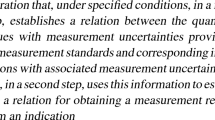Abstract
The precise point whose position is being measured when a GPS baseline is determined is generally assumed to be the phase center of the GPS antenna. However, the phase center of a GPS antenna is neither a physical point nor a stable point. For any given GPS antenna, the phase center will change with the changing direction of the signal from a satellite. Ideally, most of this phase center variation depends on satellite elevation. Azimuthal effects are only introduced by the local environment around each individual antenna site. These phase center variations affect the antenna offsets that are needed to connect GPS measurements to physical monuments. Ignoring these phase center variations can lead to serious (up to 10 cm) vertical errors. This article will describe the procedure by which the National Geodetic Survey is calibrating GPS antennas and how this information may be obtained and used to avoid problems from these antenna variations. © 1999 John Wiley & Sons, Inc.
Similar content being viewed by others
Author information
Authors and Affiliations
Rights and permissions
About this article
Cite this article
Mader, G. GPS Antenna Calibration at the National Geodetic Survey. GPS Solutions 3, 50–58 (1999). https://doi.org/10.1007/PL00012780
Published:
Issue Date:
DOI: https://doi.org/10.1007/PL00012780



